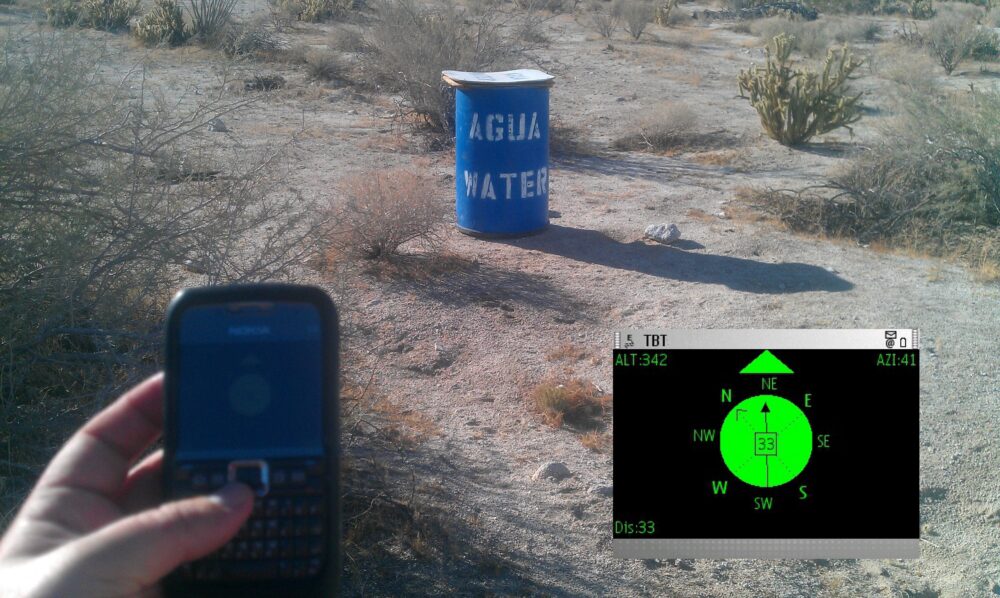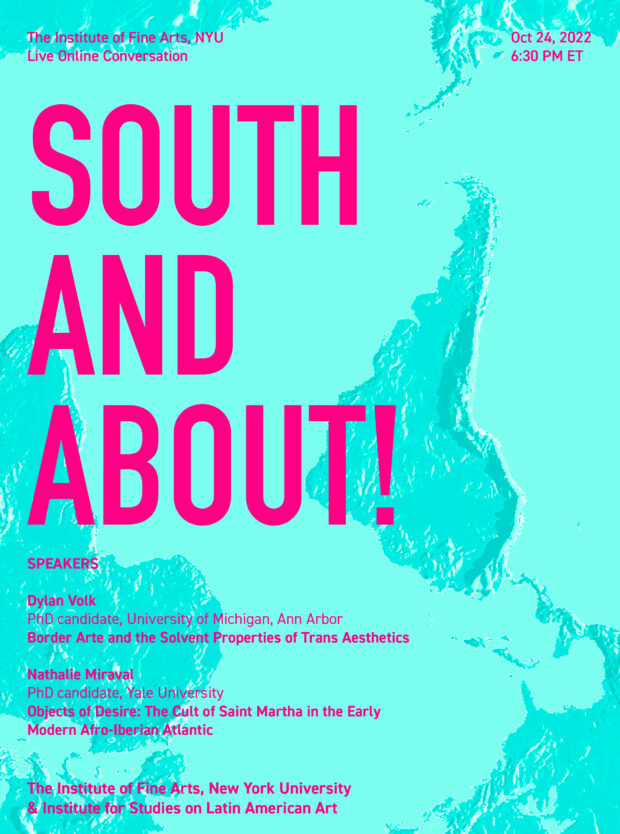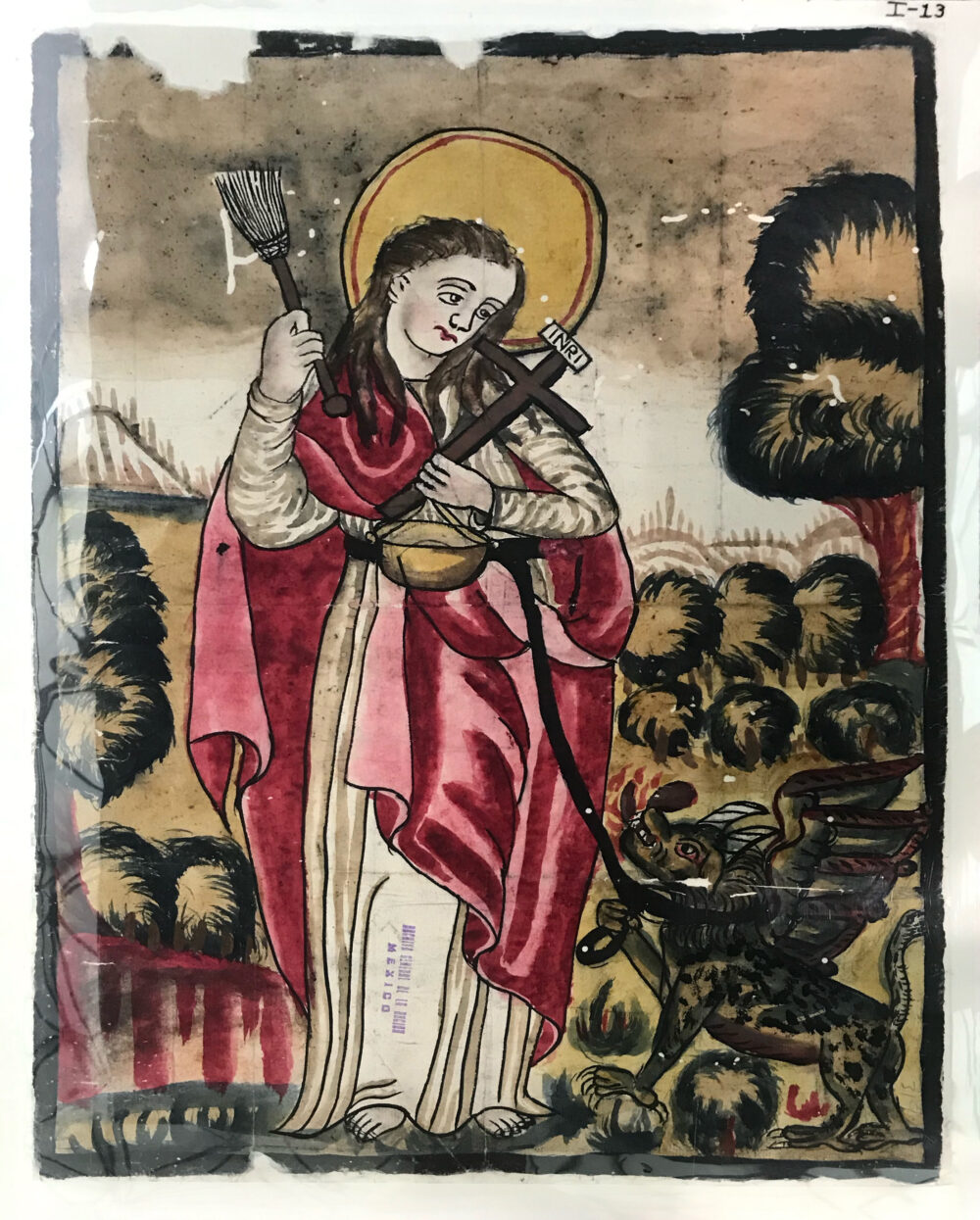South and About! Fall 2022
October 24
South & About! is a student-organized research workshop on the arts from Latin America and the Caribbean. This program invites graduate students and emerging scholars in art history and related disciplines to participate in informal discussions amongst their peers.
Border Arte and the Solvent Properties of Trans Aesthetics
Dylan Volk, PhD Candidate, University of Michigan, Ann Arbor
In 2010, conservative commentator Glenn Beck alleged that a group of artists and academics wanted to “dissolve” the United States, and that they intended to do so using mobile phones and “explicit poetry.”1 The target of Beck’s ire was The Transborder Immigrant Tool (TBT), a socially engaged project devised by Electronic Disturbance Theater (EDT) 2.0 and b.a.n.g. lab to provide migrants with safe navigation to water safety sites throughout the Sonoran Desert along the U.S.-Mexico border. In addition to geographic coordinates, the mobile application supplied users with randomized recordings of poems spoken aloud in English, Spanish, Maya, and Náhuat. “Look for the ‘trans-’ of transcendental-isms,” instructs one such poem: “This Bridge Called My Back, my heart, my head, my cock, my cunt, my tunnel.” This paper applies a queer of color perspective to TBT, informed in large part by Gloria Anzaldúa’s writings on border arte and the potently polysemantic meaning of the borderland, in order to consider how the fluid forms of trans aesthetics make soluble the real and discursive boundaries between Mexico and the United States. Reading Electronic Disturbance Theater alongside Anzaldúa’s, I argue for the reconceptualization of the genres of border arte and trans aesthetics that might more vividly animate the ecopolitical currents of them both. I thus suggest TBT as a model for imagining a socially engaged art practice that not only enacts Anzaldúa’s queer of color critique, but properly reshapes it for our contemporary geo- and ecopolitical landscapes.
1 Glenn Beck, “UCSD Professors: Dissolve U.S. — Give GPS Phones With Explicit Poetry to Illegals for Border Crossing,” TheBlaze, August 31, 2010, www.theblaze.com/tag/ucsd-professors-want-to-dissolve-us-give-gps-phones-with-explicit-poetry-to-illegals-for-border-crossing.

Objects of Desire: The Cult of Saint Martha in the Early Modern Afro-Iberian Atlantic
Nathalie Miraval, PhD Candidate, Yale University
In 1594, the Inquisition in New Spain condemned the “mulata” Inés de Villalobos for practicing sorcery. According to inquisitors, Inés invoked Saint Martha for superstitious ends—in this case controlling the free will of her husband. In her defense, Inés maintained that she sought Martha’s protection to prevent her husband from beating her to death, following her husband’s discovery of her affair with another man. Impervious to her plight, inquisitors sentenced Inés to public humiliation and confiscated a watercolor of Saint Martha that she owned, today preserved in Mexico City’s Archivo General de la Nación.
Inés watercolor forms part of a larger corpus of Saint Martha devotional images owned and used by Afro-descendant laywomen across the early modern Iberian Atlantic. In many cases, such as with Inés, these images functioned as amuletic objects tucked away in pouches filled with other potent materials such as herbs, altar stones, and bones. These objects, I suggest, reside at the nexus of competing religious and social desires of these laywomen. This paper thus examines how Inés’ devotion to Saint Martha reveals the affective dimensions of subversive power.

